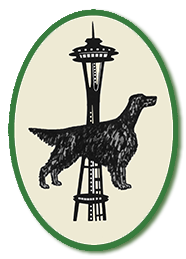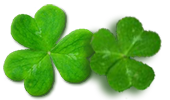Breed Information
This is the Irish Setter
courtesy of the Irish Setter Club of America
| The Irish Setter has been termed by artists to be the most beautiful of all dogs. With its flowing, silky red coat, long ears, soft expression and regal bearing, this dog turns heads wherever it goes. | |
 |
Along with its appearance, the Irish Setter's personality is fun loving, playful and affectionate. The standard calls for a "rollicking" temperament, and anyone who has had the pleasure of raising an Irish Setter puppy can tell you exactly what that means. It is mischievous and independent, intelligent and stubborn, anxious to please and yet determined to have its way if it decides to-go hunting or steal a treasure from closet or drawer. Hunting instinct is strong and the breed enjoys a fine reputation as a reliable companion in the field. |
| The Irish Setter is a slow maturing dog, both mentally and physically. It stays a puppy for a long time, and retains some of its merry Irish character forever. Some believe that the setter is difficult to train, but this is not so. The Irish Setter is very smart, sometimes smarter than its owner, so one must use care and patience in training this dog. Once learned, a lesson is never forgotten, so it behooves the owner to train a puppy with love and firmness, never harshness or cruelty. The breed is naturally clean and fastidious and will housetrain quickly, if given the opportunity to go out at regular intervals when it is young. It loves to be with its people and will adapt to riding in a car, preferably in a crate where it can stretch out comfortably and be secure. This breed is not aggressive but it will energetically announce the arrival of all comers, and if put to the test has been known to protect its owners from harm. |
|
| One of the primary requisites for owning an Irish Setter is the time and the facilities to exercise it often. This is a high-energy-level breed, needing an area to run and play big enough for it to stretch its legs. This is the single most important factor in raising a happy and healthy dog. Exercise, however, does not mean opening the door and allowing the dog to run free. Irish Setters will follow their noses and cannot be guaranteed to remain within one's property until they are well along in years. Sometimes this happy state never occurs. Either an ample fenced yard or the means to walk or run the dog daily are a must if you wish to have a happy and adjusted Irish Setter. | |
Official Standard for the Irish Setter
courtesy of the Irish Setter Club of America
General Appearance:
| The Irish Setter is an active, aristocratic bird dog, rich red in color, substantial yet elegant in build. Standing over two feet tall at the shoulder, the dog has a straight, fine, glossy coat, longer on ears, chest, tail and back of legs. Afield, the Irish Setter is a swift-moving hunter; at home, a sweet natured, trainable companion. |
|
At their best, the lines of the Irish Setter so satisfy in overall balance that artists have termed it the most beautiful of all dogs. The correct specimen always exhibits balance, whether standing or in motion. Each part of the dog flows and fits smoothly into its neighboring parts without calling attention to itself. Size, Proportion, Substance: There is no disqualification as to size. The make and fit of all parts and their overall balance in the animal are rated more important. 27 inches at the withers and a show weight of about 70 pounds is considered ideal for the dog; the bitch 25 inches, 60 pounds. Variance beyond an inch up or down is to be discouraged. Proportion-Measuring from the breastbone to rear of thigh and from the top of the withers to the ground, the Irish Setter is slightly longer than it is tall. Substance-All legs sturdy with plenty of bone. Structure in the male reflects masculinity without coarseness. Bitches appear feminine without being slight of bone. |
| Head: Long and lean, its length at least double the width between the ears. Beauty of head is emphasized by delicate chiseling along the muzzle, around and below the eyes, and along the cheeks. Expression soft, yet alert. Eyes somewhat almond shaped, of medium size, placed rather well apart, neither deep set nor bulging. Color, dark to medium brown. Ears set well back and low, not above level of eye. Leather thin, hanging in a neat fold close to the head, and nearly long enough to reach the nose. The skull is oval when viewed from above or front; very slightly domed when viewed in profile. The brow is raised, showing a distinct stop midway between the tip of the nose and the well-defined occiput (rear point of skull). Thus the nearly level line from occiput to brow is set a little above, and parallel to, the straight and equal line from eye to nose. Muzzle moderately deep, jaws of nearly equal length, the underline of the jaws being almost parallel with the top line of the muzzle. Nose black or chocolate; nostrils wide. Upper lips fairly square but not pendulous. The teeth meet in a scissors bite in which the upper incisors fit closely over the lower, or they may meet evenly. |
| Neck, Topline, Body: Neck moderately long, strong but not thick, and slightly arched; free from throatiness and fitting smoothly into the shoulders. Topline of body from withers to tail should be firm and incline slightly downward without sharp drop at the croup. The tail is set on nearly level with the croup as a natural extension of the topline, strong at root, tapering to a fine point, nearly long enough to reach the hock. Carriage straight or curving slightly upward, nearly level with the back. Body sufficiently long to permit a straight and free stride. Chest deep, reaching approximately to the elbows with moderate forechest, extending beyond the point where the shoulder joins the upper arm. Chest is of moderate width so that it does not interfere with forward motion and extends rearwards to well sprung ribs. Loins firm, muscular and of moderate length. |
| Forequarters: Shoulder blades long, wide, sloping well back, fairly close together at the withers. Upper arm and shoulder blades are approximately the same length, and are joined at sufficient angle to bring the elbows rearward along the brisket in line with the top of the withers. The elbows moving freely, incline neither in nor out. Forelegs straight and sinewy. Strong, nearly straight pastern. Feet rather small, very firm, toes arched and close. |
| Hindquarters: Hindquarters should be wide and powerful with broad, well developed thighs. Hind legs long and muscular from hip to hock; short and perpendicular from hock to ground; well angulated at stifle and hock joints, which, like the elbows, incline neither in nor out. Feet as in front. Angulation of the forequarters and hindquarters should be balanced. |
| Coat: Short and fine on head and forelegs. On all other parts of moderate length and flat. Feathering long and silky on ears; on back of forelegs and thighs long and fine, with a pleasing fringe of hair on belly and brisket extending onto the chest. Fringe on tail moderately long and tapering. All coat and feathering as straight and free as possible from curl or wave. The Irish Setter is trimmed for the show ring to emphasize the lean head and clean neck. The top third of the ears and the throat nearly to the breastbone are trimmed. Excess feathering is removed to show the natural outline of the foot. All trimming is done to preserve the natural appearance of the dog. Color: Mahogany or rich chestnut red with no black. A small amount of white on chest, throat or toes, or a narrow centered streak on skull is not to be penalized. |
| Gait: At the trot the gait is big, very lively, graceful and efficient. At an extended trot the head reaches slightly forward, keeping the dog in balance. The forelegs reach well ahead as if to pull in the ground without giving the appearance of a hackney gait. The hindquarters drive smoothly and with great power. Seen from front or rear, the forelegs, as well as the hind legs below the hock joint, move perpendicularly to the ground, with some tendency towards a single track as speed increases. Structural characteristics which interfere with a straight, true stride are to be penalized. |
| Temperament: The Irish Setter has a rollicking personality. Shyness, hostility or timidity are uncharacteristic of the breed. An outgoing, stable temperament is the essence of the Irish Setter. |
| Approved August 14, 1990 Effective September 30, 1990 |
Health Information

